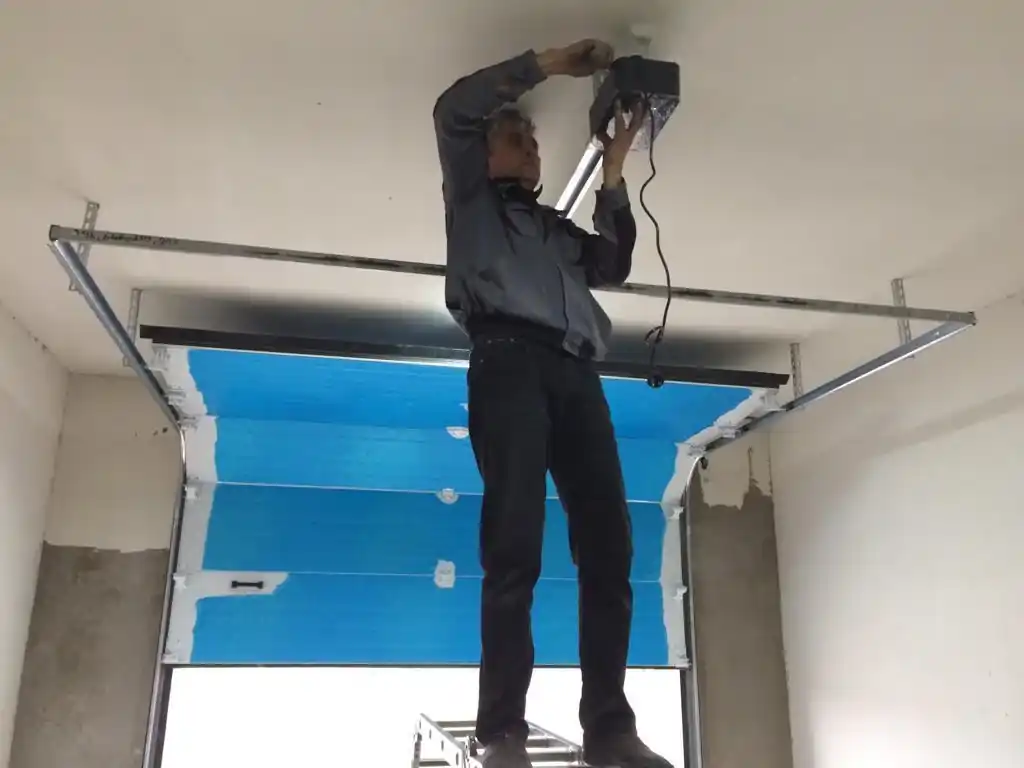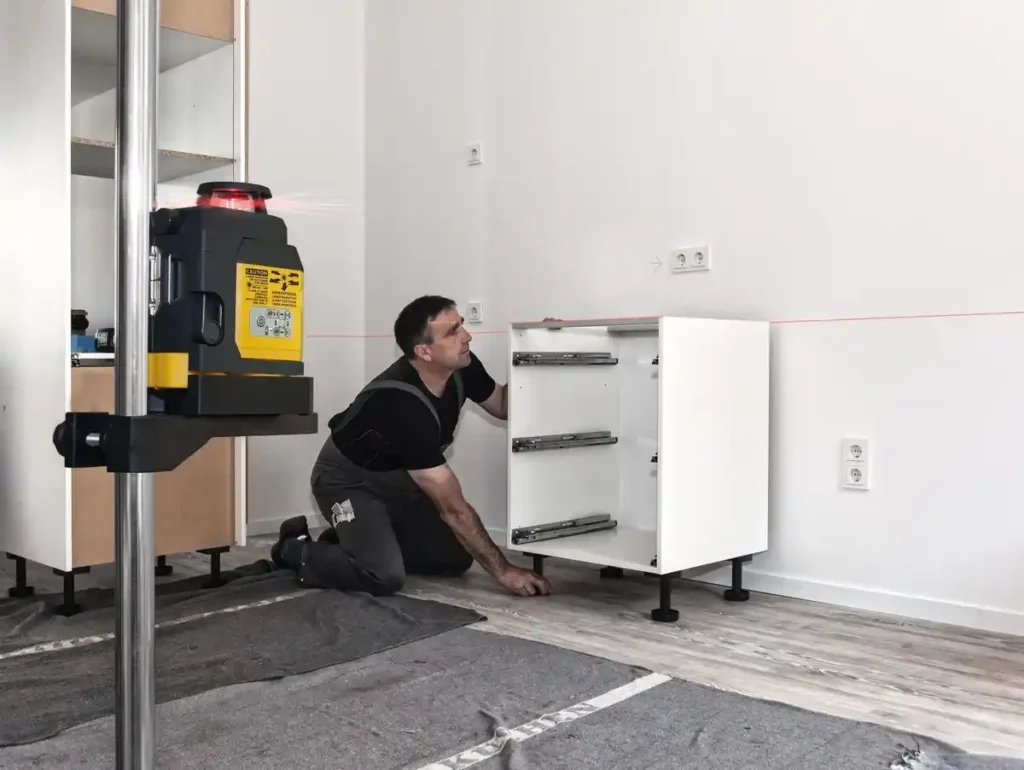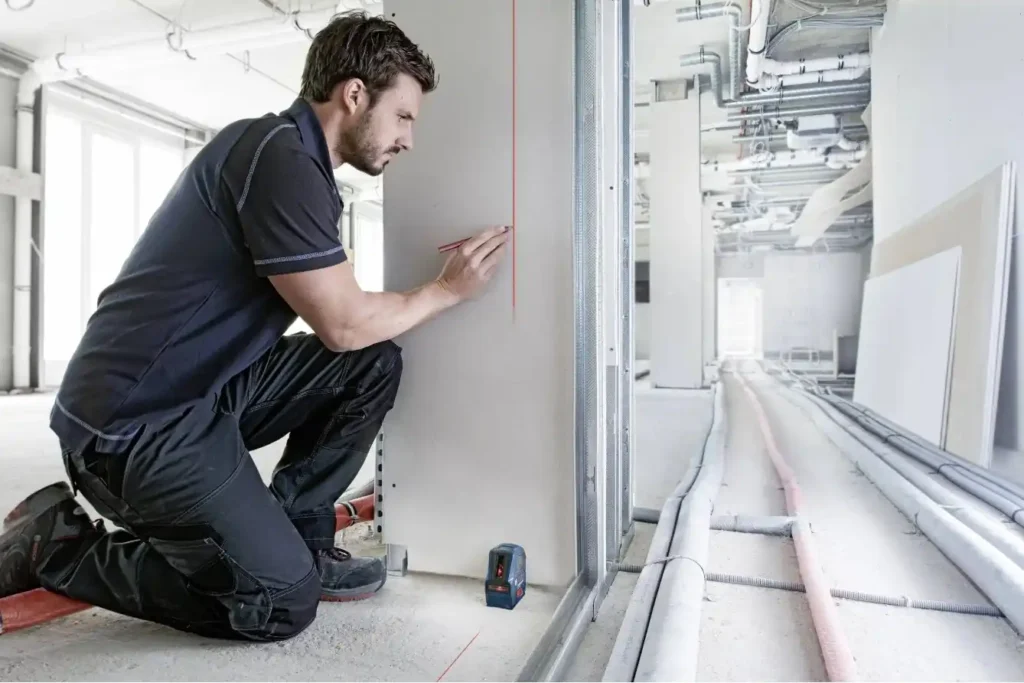Good garage door maintenance is important for keeping your garage door working well and safely. Over time, garage door panels might have problems due to regular use, especially at the hinges. If the hinges fail, the door can become misaligned, unsafe, and may not work right.
Garage Door Hinge Replacement is a simple but effective way to fix these issues. If you learn how to replace the hinges properly, you can improve garage door performance and make it last longer. This way, you can save money by avoiding frequent repairs.
Key Takeaways
- Learn the significance of garage door hinge replacement, including their role in maintaining the structural integrity of sectional garage doors and how their hinge gauges impact performance.
- Understand why garage door repairs, such as hinge replacements, are essential for safety and garage door longevity.
- Explore the 5-step guide, from identifying the right numbered hinges to replacing and lubricating garage door parts effectively.
- Discover the necessary tools, like a bracket screw and wire rope, to complete a durable hinge installation.
- Refer to expert-backed tips for preventing noisy door operation and ensuring smooth garage door performance.
Understanding Garage Door Hinges and Their Importance

Garage door hinges often go unnoticed. However, they hold the weight of sectional garage doors and help the panels move smoothly. Whether you have a residential door or a commercial door, these hinges are important for connecting the panels.
If you do not take care of the hinges, you might face broken hinges, loud noises, or safety issues. Replacing damaged hinges helps keep your garage door strong. It ensures it operates smoothly and lasts a long time, regardless of how often you use it.
1. What are garage door hinges?
Garage door hinges are parts that link different garage door sections. They help the door open and close easily. You can find them on overhead garage doors and sectional designs.
These hinges are important for how the door moves and stays aligned. They come in different sizes, such as numbered hinges like #1, #2, and #3, each made for a certain panel spot.
Hinge gauges are important when picking hinges. Most residential doors use 18-gauge or 16-gauge hinges. Heavier doors need the tougher 14-gauge hinges for added strength.
There are also special types, like outer panel edge hinges or center hinges, for certain garage door panel setups. Keeping this hardware in good shape is important to make sure the door works smoothly. This applies to both lightweight doors and heavy steel panels. Whether you need basic garage door hinges or more advanced parts, choosing the right hinge is key for the best performance.
2. Why is it crucial to maintain and replace hinges?
Neglecting hinges can cause many problems. This can lead to more garage door repairs needed. Damaged hinges can mess up the door’s alignment. They also put more pressure on the rollers, increasing the chance of malfunction.
Garage Door Hinge Replacement quickly is important for safety, repair, and installation. It helps keep the door stable. Worn hinges can create major safety risks. They might cause panels to fall unexpectedly. Fixing smaller problems right away can stop these dangers.
Taking care of hinges is also key for garage door longevity. Regular maintenance, like lubrication and timely Garage Door Hinge Replacement, helps ease the load on other parts like springs and rollers. Doing this improves the door’s function and can cut down on garage door repair cost later.
5-Step to Garage Door Hinge Replacement

Garage door hinge replacement might sound difficult, but it gets easier with a clear plan. This 5-step guide helps you find the right hinge type, gather what you need, and replace garage door hinges successfully.
If you have broken hinges or just want to upgrade for better durability, these steps work for both residential garage doors and commercial sizes. Get ready to save money and fix your door quickly. Now, let’s start with the first step: identifying hinge types.
3. Identify the Type of Garage Door Hinges

Finding the right hinge type is the first step for a successful Garage Door Hinge Replacement. Check for numbered hinges printed on your garage door. You might see #1 at the bottom, #2 in the middle, and #3 at the top.
Each number shows where the hinge goes, which helps keep the door aligned. Different doors, like residential doors or commercial doors, need certain materials. For example, lightweight wood doors usually need 18-gauge hinges. On the other hand, heavier doors require 14-gauge steel hinges.
Make sure to use matching hinge gauges for best results. If the size is wrong, it can cause problems and wear out the hinges too fast. For modern garage doors, having the correct hinge reduces stress and stops snapping, which helps maintain the door’s strength.
4. Gather the Right Tools and Materials
Before you start, gather all the tools and materials you need. Important items include pack garage door hinges, a bracket screw, wire rope, and a good garage door hinge replacement kit. These parts help make the installation easier and keep the hinges safe.
You will also need tools like a wrench, pliers, and screwdrivers to take off and tighten hardware. A cordless drill can help speed up the work when you have many screws to handle.
For a smooth process, always check that your new hinges match the gauge and number of the old ones. Having everything ready in advance will help you avoid stops and keep the work going smoothly.
5. Disconnect the Garage Door Opener

Safety first! Unplug the door opener to avoid any electrical issues while you perform the Garage Door Hinge Replacement. This step makes sure there are no unwanted movements while you work.
Next, remove the cables to the garage door. Make sure they are loose. This helps reduce tension in the panels. Also, check the alignment of the garage door opener repair parts. If they are not aligned, it can cause problems when you put everything back together.
Finally, make sure the door is completely still. By fully disconnecting the garage door opener replacement mechanism, you create a safe area to handle the hinges without worrying about the door moving unexpectedly.
6. Remove and Replace the Damaged Hinges
With the door secured, take off the broken hinges by unscrewing the bolts that hold them to the door panels. Use a wrench to carefully unclip the hinge. Be careful not to disturb nearby parts.
Now, replace the damaged hinge with the new one from your garage door hinge replacement kit. Make sure to line up the bolt holes, secure it with bracket screws, and check that the roller fits well for smooth panel movement.
Do this same process for each damaged area, fixing one hinge at a time. This keeps everything strong and steady. Following these steps helps to avoid uneven stress on the door. It also makes sure the replacement brings back its full function.
7. Test the Door and Lubricate Moving Parts

Once you finish Garage Door Hinge Replacement, test your door by opening and closing it by hand. This helps you check if everything is lined up right and if the new hinges work well. Watch for any noisy door operation, as that could mean some hardware is loose.
Then, put some lubricant like lithium on the garage door hinges and rollers. This will lower friction, help the moving parts last longer, and boost performance. Make sure to spread the lubricant evenly, especially on any fixed areas.
Listen for smooth operation—that’s a sign of a quality garage repair. This last step will make sure your residential door or commercial door works as good as new.
Final Words
Garage Door Hinge Replacement is important and not too complicated. This task can make your garage door work better and last longer. You need to know what kind of hinges you need and have the right tools, so the process goes smoothly.
Keeping up with regular maintenance and changing hinges when needed can stop larger issues later. This also helps keep your home safe and efficient. Whether you choose to do it yourself or get professional help, Garage Door Hinge Replacement is a smart way to care for your property. If you have any questions or need help, just ask!
Frequently Asked Questions
1. How much does it cost to replace garage door hinges?
Garage door hinge replacement typically costs $5 to $20 per hinge, depending on the gauge and material. Some garage door repair companies offer deals that may include hinge replacements. If you’re handy, you can save money by purchasing parts online.
2. Can you replace garage door hinges?
Yes, you can do it. With the right tools and focus on safety, DIY garage door repairs for hinges are possible. Changing hinges during garage door maintenance can help keep things safe and working well for residential door applications. It is best to hire professionals for more complicated tasks like cable adjustments.
3. Are all garage door hinges the same?
No, hinges come in different types and sizes. Numbered hinges like #1, #2, and #3 are linked to certain panels. Residential doors usually use lighter hinges. On the other hand, commercial garage doors need stronger ones because of their weight. Always make sure to check your hinge type to guarantee they will work together.
4. How do I know what garage door hinges to buy?
Look at the hinge gauges and where they are on your door. Usually, the #1 hinge is at the bottom, while #2 and #3 are positioned above it. Check the model of garage door and examine the current garage door carriage bolts. This will help you choose the right replacement hinges.
5. Where did you see a lower price?
Many websites, such as North Shore Commercial Door, have deals on garage door supplies. If you find a deal on garage door hinges elsewhere, check if it includes things like returns warranty and if it fits your needs before you buy. This way, you can avoid any problems later.
6. What can I use to reattach the hinges to my garage door?
To put the hinges back, use bracket screws, wire rope, and garage door carriage bolts. A common hinge kit comes with these items to make it easier to install. Make sure the hinge sits straight with the garage door frame. This helps stop any misalignment when the door works.
7. Who would you call to fix a door hinge?
For repairs, get in touch with garage door repair companies or local garage door technicians. They provide safety garage door repair & installation services and have the right skills. If the problem is small, you can buy a premium garage door repair kit for DIY fixes.
8. Can I repair a garage door myself?
Yes, small fixes like DIY garage door repairs can address issues with hinges and rollers. Basic garage door maintenance ensures smooth operation. However, for structural problems or tensioned parts, expert safety garage door repair and installation are essential to prevent accidents.
9. Is it better to repair or replace a damaged garage door?
It really depends on how bad the damage is. For small problems, the garage door repair cost is low. But if the damage disrupts garage door performance or puts safety at risk, you should think about a full garage door replacement. This option is better for garage door longevity.
10. What are the best garage door parts or Accessories?
High-quality parts improve reliability. Think about garage door rollers such as blue nylon wheels for a smooth ride. Use top-notch garage door panels and strong, rust-resistant overhead door hinges for long-lasting use. For large commercial size doors, choose strong hardware that can handle heavy weights.

